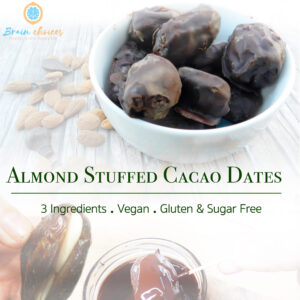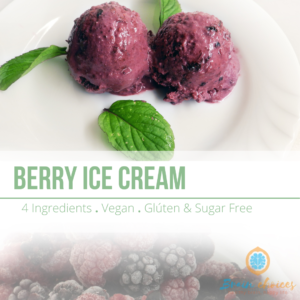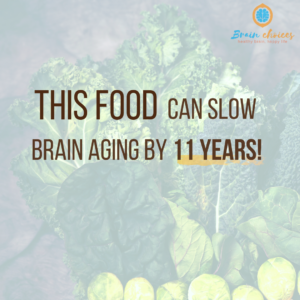
In my last post, I gave you a delicious and simple almond stuffed cacao dates recipe. Now, I am giving you another super simple, delicious, and brain-friendly recipe: carob almonds!
Although cacao holds many health benefits likely due to its high flavonol content, the truth is that some people are intolerant to cacao. Some people report having sleep problems, feeling nervous, or even having headaches when they eat cacao. So, the good news is that if that is your case, you can use carob instead of cacao in your “chocolate” recipes!
Carob tastes similar to chocolate and it also has a high nutrient profile. It has a lot of fiber, no caffeine, no gluten, many antioxidants (polyphenols), vitamins, and minerals.
A study in rats showed that carob prevented short-term memory deficit induced by chronic stress, suggesting that it may be also very beneficial for brain health (1).
A double-blind randomized placebo-controlled study in humans also found that the antioxidant polyphenols in carob insoluble fiber lowered total cholesterol and LDL (bad) cholesterol in people with high cholesterol, triglycerides, and LDL to HDL (good) cholesterol ratio (2).
Nuts are well known to provide neuroprotective effects and enhancing brain health and cognitive performance (3, 4, 5). Therefore you will very often see nuts in my recipes 🙂
I hope you like this carob almonds recipe as much as I do! 🙂

Carob Almonds
Ingredients
- 100 g extra-virgin coconut oil (cold-pressed)
- 50 g unprocessed raw honey*
- 15 g carob powder
- 100 g almonds
Instructions
- Heat a little bit of water and place a bowl inside with the coconut oil until this is melted.
- Remove the bowl from the heat and add the honey and carob. Mix well.
- Add the almonds to the mixture and mix well.
- Place the mixture in a rectangular glass box and put it in the fridge for about 1h to solidify.
- Cut it in little squared/rectangular pieces. Place it again in the fridge until solid or until you want to serve it.
Notes
Enjoy! 🙂
References
(1) https://link.springer.com/article/10.1007%2Fs12031-018-1161-8
(2) https://link.springer.com/article/10.1007/s11130-009-0153-9
(3) https://www.sciencedirect.com/science/article/abs/pii/S1043661817311751?via%3Dihub
(4) https://www.sciencedirect.com/science/article/abs/pii/S0361923015300538?via%3Dihub




